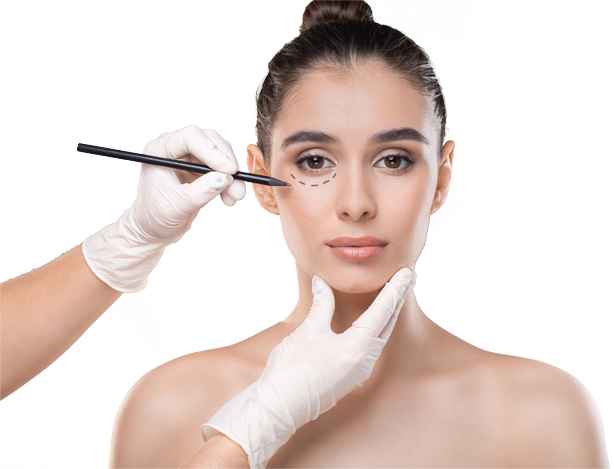Facial rejuvenation
Most Popular Procedures
Facial rejuvenation refers to a set of procedures and treatments aimed at improving the appearance of the face, giving it a more youthful and refreshed look. Here are some tips for facial rejuvenation:
Use a moisturizer: Keeping the skin hydrated can help to prevent fine lines and wrinkles. Use a moisturizer with hyaluronic acid, which can help to plump up the skin and improve its texture.
Protect your skin from the sun: Sun exposure can cause skin damage and premature aging. Use broad-spectrum sunscreen with an SPF of 30 or higher to protect your skin from the harmful effects of the sun.
Use retinoids: Retinoids are a type of vitamin A that can help to stimulate collagen production and improve the texture of the skin. Talk to your dermatologist about using a retinoid product.
Facial rejuvenation
Multiple Treatment Options
Consider dermal fillers: Dermal fillers can help to plump up the skin and reduce the appearance of wrinkles and fine lines. Consult with a dermatologist or plastic surgeon to determine if dermal fillers are appropriate for you.
Try chemical peels: Chemical peels can help to improve the texture of the skin and reduce the appearance of age spots and fine lines. Consult with a dermatologist or aesthetician to determine if a chemical peel is appropriate for your skin type.
Practice good skincare: Cleansing, toning, and moisturizing the skin regularly can help to keep it looking healthy and youthful. Use products that are suitable for your skin type and avoid harsh or abrasive products.
Remember that facial rejuvenation techniques may vary depending on individual needs and the severity of the skin damage. Consult with a dermatologist or plastic surgeon to determine the best treatment plan for you.
Faq
Frequently Asked Questions
A. Facial rejuvenation refers to a set of procedures and treatments aimed at improving the appearance of the face, giving it a more youthful and refreshed look. This can include non-surgical treatments such as dermal fillers, chemical peels, and laser therapy, as well as surgical treatments such as facelifts.
A. Anyone who wants to improve the appearance of their skin and reduce the signs of aging may be a good candidate for facial rejuvenation. However, the best candidates are generally in good health and have realistic expectations about the results of the treatments.
A. Non-surgical treatments for facial rejuvenation include dermal fillers, chemical peels, microdermabrasion, and laser therapy. These treatments can help to reduce the appearance of fine lines and wrinkles, improve skin texture, and give the face a more youthful appearance.
A. facelift is a surgical procedure that involves tightening the skin on the face and neck to give it a more youthful appearance. This is done by removing excess skin and tightening the underlying tissues.
A. All medical procedures carry some degree of risk, and facial rejuvenation treatments are no exception. Common side effects include swelling, redness, and bruising, and more serious complications can occur in rare cases. It's important to discuss the risks and benefits of any treatment with a qualified medical professional before undergoing the procedure.
A. The duration of the results of facial rejuvenation treatments varies depending on the type of treatment and individual factors such as age and skin condition. Non-surgical treatments may last for several months to a year or more, while the results of surgical treatments such as facelifts may last for several years.
Remember to consult with a qualified medical professional to determine the best treatment plan for your individual needs and goals.
A. The duration of the results of facial rejuvenation treatments varies depending on the type of treatment and individual factors such as age and skin condition. Non-surgical treatments may last for several months to a year or more, while the results of surgical treatments such as facelifts may last for several years.






